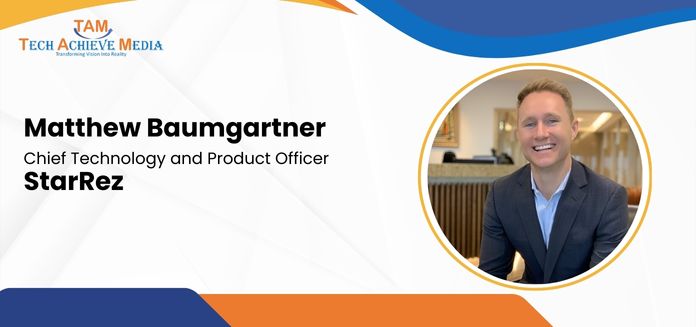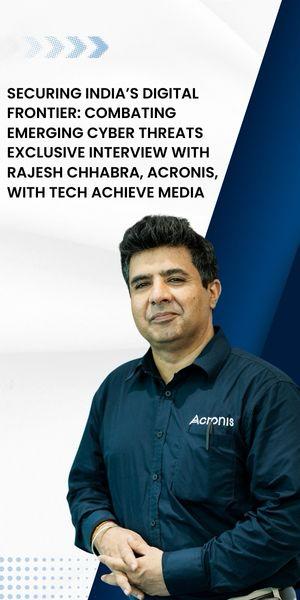The student housing and residential community management sector is undergoing a major technology transformation, driven by the need for predictive insights, unified platforms and AI-enabled automation. Against this backdrop, StarRez has established a new global Innovation Hub in Hyderabad, aimed at accelerating product engineering, modern SaaS architecture and data-driven innovation for its global customers. With India emerging as a powerful center of engineering talent and technology leadership, the hub is positioned to play a pivotal role in the company’s worldwide roadmap. In this interview with Tech Achieve Media, Matthew Baumgartner, Chief Technology and Product Officer at StarRez, discusses the strategic significance of the India hub, the focus areas it will drive across AI, analytics and automation, and the opportunities ahead for the global housing technology ecosystem.
TAM: What prompted StarRez to establish its global Innovation Hub in Hyderabad, and why is India a strategic market for the company’s next phase of growth?
Matthew Baumgartner: India offers a combination of exceptional engineering talent, a thriving education ecosystem and a dynamic culture of innovation. Hyderabad stood out to us for its connectivity, infrastructure and business-friendly environment. In fact, the Telangana government’s launch of the Telangana Artificial Intelligence Innovation Hub (TAIH) signals clearly that Hyderabad is not just a services location, it’s positioning itself as an AI and product innovation ecosystem.
For StarRez, we are treating “StarRez India” as a strategic innovation hub, one of our key growth pillars. Our Hyderabad team is already contributing to core product engineering, AI innovation and platform modernization, helping us deliver smarter, more scalable and more connected student housing experiences to our customers worldwide.
TAM: How does the India Hub integrate into StarRez’s global product and technology roadmap?
Matthew Baumgartner: All StarRez locations operate on a single unified global roadmap. Our Hyderabad team is fully integrated, they co-create, architect, ship and measure features alongside all our other R&D hubs. This isn’t a back-office, it’s product engineering and innovation across the full software lifecycle.
We are also embedding AI and automation into key workflows to make the platform more predictive and assistive, think forecasting occupancy, automating administrative processes and personalizing resident engagement with data-driven insights. Our India team is also modernizing the platform’s architecture for increased global scale, high performance and of course security.
TAM: What opportunities does this expansion create for Indian engineers in terms of leadership roles, greenfield projects, and global exposure?
Matthew Baumgartner: We are scaling quickly, backed by Vista Equity Partners. That means large greenfield work, production-scale end-to-end ownership and global visibility. Engineers in Hyderabad design, build and ship functionality used by millions of residents, in partnership with our product and tech teams worldwide.
We have already hired world-class team members and are continuing to build out and strengthen our leadership bench. Early joiners obviously get disproportionate influence on how the organization evolves. Our global Product & Technology leaders, myself included, regularly travel to India to mentor teams and share ideas, because we believe the India hub is core to our future, not peripheral.
TAM: What specific innovation areas, GenAI, analytics, automation, modern SaaS architectures, will India take the lead on?
Matthew Baumgartner: There are three main areas of focus:
Agentic workflows: these are AI-driven assistants that understand context, take multi-step actions, and learn from outcomes. In practice our India teams are building features that let housing administrators configure processes, triage tasks and personalize resident experience without heavy manual oversight.
Predictive insights and analytics: forecasting occupancy, spotting risk signals across the resident lifecycle, turning operational data into actionable decisions.
Modern SaaS platforms: cloud-native services, event-driven design, mobile-first workflows and architecting for scale, resilience and faster delivery.
TAM: What does the next chapter of StarRez’s global growth look like?
Matthew Baumgartner: In India, our immediate priority is to scale the team from 40 to 200+ while deepening our capabilities in AI, data analytics and product engineering. Our goal: accelerate value delivery, raise product quality and extend StarRez’s position as the global leader in housing-management SaaS.
Globally we will continue to invest in new markets, technology and talent under Vista’s backing, focusing relentlessly on faster product cycles, stronger customer experience and a platform built for growth, reliability, security and ease of extension.
TAM: What new opportunities does this growth unlock for universities, property management companies, and residential communities worldwide?
Matthew Baumgartner: By advancing our unified, cloud-based SaaS platform, universities, housing providers and communities get smarter tools: fewer disconnected systems, more seamless workflows, deeper resident engagement. With data-rich insights, automation and predictive capabilities, housing administrators can act earlier, manage efficiency better, and enhance transparency. Students and residents benefit from more intuitive, engaging living experiences.
Our scale matters, every innovation we build in Hyderabad and elsewhere ships globally, touching over 1,100 institutions, 2,000+ properties and 3 million residents annually.
TAM: How is StarRez ensuring scalability, security, and performance as demand for unified housing management platforms rises worldwide?
Matthew Baumgartner: Our platform runs on a modern, cloud-native infrastructure hosted on Microsoft Azure with .NET services on Azure Kubernetes Service and Azure SQL. We use Datadog, Sentry and Azure observability tools for monitoring, logging and real-time insights.
From a security standpoint we embed threat-modelling, least-privilege access, static and dynamic code analysis in CI pipelines, continuous posture-management in production and recovery testing. Reliability is designed into the product, not a checkbox or after thought.









